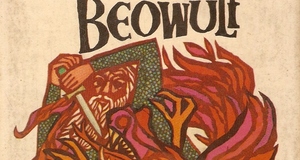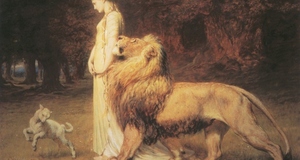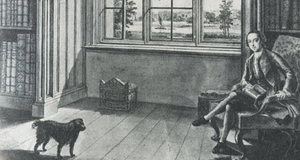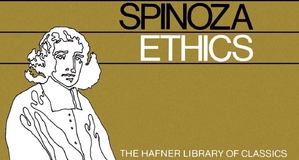Teresa of Avila's The Interior Castle as an Individualizing Text
By
2015, Vol. 7 No. 06 | pg. 2/2 | « Teresa’s Sensual LanguageTo understands Teresa’s experiential theology, it is essential to examine her ecstasy account for it is there where we find the inspiration for her ardent writings. The highly erotic language she implements in her recollection of the incident caused much controversy in her time and it continues to seem peculiar to audiences today. Teresa describes how a beautiful angel pierced her heart causing an extreme pain which made her moan and ablaze “with a great love of god” (Ahlgrem, p. 12). Here, the poetess seduces the reader with the tension caused by the repeated stabbing of the golden dart and the sweet freedom of its release and consequential spiritual awakening. The sensuality of this narration reclaims the human body as a benign place, worthy of God’s interaction. The raw emotions Teresa describes produce an equally passionate response from the fateful and allowed for a metaphorical interaction with the inaccessible divinity. Although Teresa has a distinctive style, this reliance on vivid imagery to convey an intense emotional response is a characteristic feature of Spanish Catholicism. The cult to Francis of Assisi relies heavily on the moving potential of his famous stigmata, a physical manifestation of his zealous commitment to experience Christ’s atonement. Apart from its implications of sanctity, this visually striking aspect of the monk’s life was emphasized for its theatrical character because within the Spanish monastic and mystical dogma “an understanding of the divine can never succeed in any way other than in the occurrence which brings together body, spirit and soul” (Largier, p. 9). Ignatius of Loyola also advocated for this powerful form of spiritual motivation in his Ejercicios Espirituales and Teresa implemented this style of prose in her own theological discourse (Mujica 577). In her essay “Beyond Image: The Apophatic-Kataphatic Dialectic of Teresa de Avila", professor Barbara Mujica argues that this mystic author was incredibly original for she managed to reconcile two opposite theological positions in her exhilarating writing. Teresa was able to establish an unknowable God, who remains a mystery to our limited human perception, but who becomes more palpable through the familiarity of her sensual descriptions of spiritual encounters. This argument emphasizes the importance of the human body in Teresa’s work and it justifies her usage of passional language. The Interior Castle is constantly balancing these opposite faces of divinity and yet, to the readers, this hybridity of theories is unnoticeable because the ultimate “marriage [with God] paradoxically fuses the darkness of unknowing with divine illumination” (Mujica, 2001, p. 749).Teresa needs to establish a dialect based on physicality to unite the abstract nature of her mystical claims with an intimate sense of faith and knowledge of god. Thus, the author uses a marital metaphor to illustrate the perfect balance between the mentoring force of good, which traditionally has been depicted as male, and the fragile but receptive target of his affection, the bride in the marriage and in this figurative sense the sinful humanity. This amorous language possesses a soothing quality for it inspires a sense of gentle familiarity amid the descriptions of pain, which become common as the mystic’s trials turn more dangerous. The absence of clarity, “the darkness of the soul” which Teresa describes as her book comes to an end, was a real menace for the nun (Ahlgrem, p. 163). Her vivid narrations of physical maladies as catalyst for spiritual growth were inspired by her own decaying health which constantly challenged her commitment to be an active figure within the cloistered community. Pain seems to have been an important source of encouragement for the mystic writer; the visceral account of her ecstasy is proof of this determination to interpret physical ailments as manifestations of spirituality. Teresa always viewed the physical as something to be celebrated, even if it brought sorrow. For her, the human body was the mediating ground where a Christian could experience divinity, despite her failures and incapacity to understand the creator (McLean, p. 123). Therefore, her human-centered theology foments an appreciation for the individual that was popular during a time when the potential of man was being celebrated in all areas of study. In the sixth chapter of the book “Becoming his Bride,” Teresa describes the emotional commitment of the soon to be spouse of God, who is now almost entirely following the guidance of her savior. She is constantly alert as to not offend God and she comprehends that dependence on earthly things is dangerous and fruitless, as Teresa expresses “no reliance can be found in creatures” (Ahlgrem, p. 165). This realization can be interpreted in many ways. Evidently, it means that the mystic traveler has managed to remain in the righteous path and has detached herself from her previous life of insignificant torments and desires. This is the result, as was explained, of continual effort, prayer and self-examination. Therefore, this achievement also speaks of a growing self-knowledge and individualization of the believer. Through a separation from others, the believer was able to engage in a truthful self-analysis, which revealed a potential for purity that had previously been concealed by mundane tribulations and pride. Although the book concludes with a perfect marriage to the divine, which allows the self to dissolve into the grandness of God and become one living and eternal entity, this union was the result of a continual work of retrospection, which helped the mystic lead a truthful life as an autonomous individual. Although she belonged to a secluded world of prayer and communal living, Teresa of Avila contributed greatly to the transition from the medieval self to a more sincere and unique identity. Through her writings, she redeemed the sinful qualities of God’s creation and was able to find divinity despite its spiritual weaknesses. The emphasis she places on self-discovery as a method to live authentically and connect back to the inward human purity gives her a special place in that diverse tradition of Renaissance writers who defended the individual self above the overwhelming whole. ReferencesAhlgren, Gillian T. W. (2005). InEntering Teresa of Avila's Interior castle: a reader's companion. Mahwah, N.J: Paulist Press. Coulton, G.G. (1967). Appealing to Saints for Miracles. Life in the Middle Ages, volume 42. Cambridge: Cambridge UP. De Avila, Teresa, and Alberto Campos. (2007). Su Vida. InLas Moradas o El Castillo Interior. Madrid: Edimat Libros. Largier, Niklaus. (2013). The Logic of Arousal: St. Francis of Assisi, Teresa of Avila and Therese Philosophe. Qui Parle, Vol. 13.2, 1-18. McLean, Julienne. (2003). Introducing the Mystical Text. InTowards Mystical Union: a Modern Commentary on the Mystical Text The Interior Castle by St Teresa of Avila. Staten Island, NY: St Pauls. Mujica, Barbara. (2001) Beyond Image: The Apophatic-Kataphatic Dialectic of Teresa de Avila.American Association of Teachers of Spanish Vol.84, 741-743. Zimmerman, Benedict.(1946). The interior castle: or, The mansions. London: Thomas Baker. Suggested Reading from Inquiries Journal
Inquiries Journal provides undergraduate and graduate students around the world a platform for the wide dissemination of academic work over a range of core disciplines. Representing the work of students from hundreds of institutions around the globe, Inquiries Journal's large database of academic articles is completely free. Learn more | Blog | Submit Latest in Literature |


















